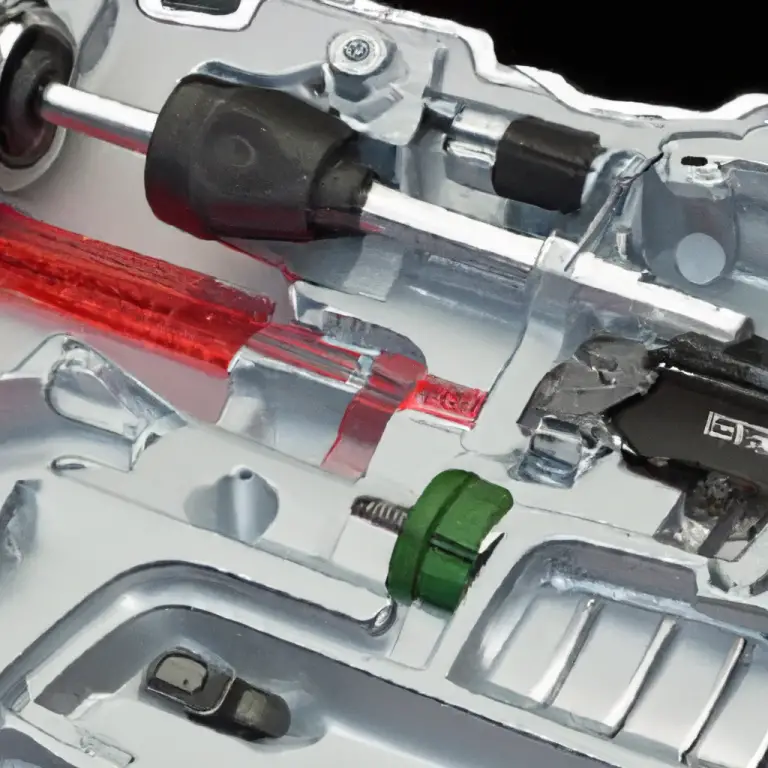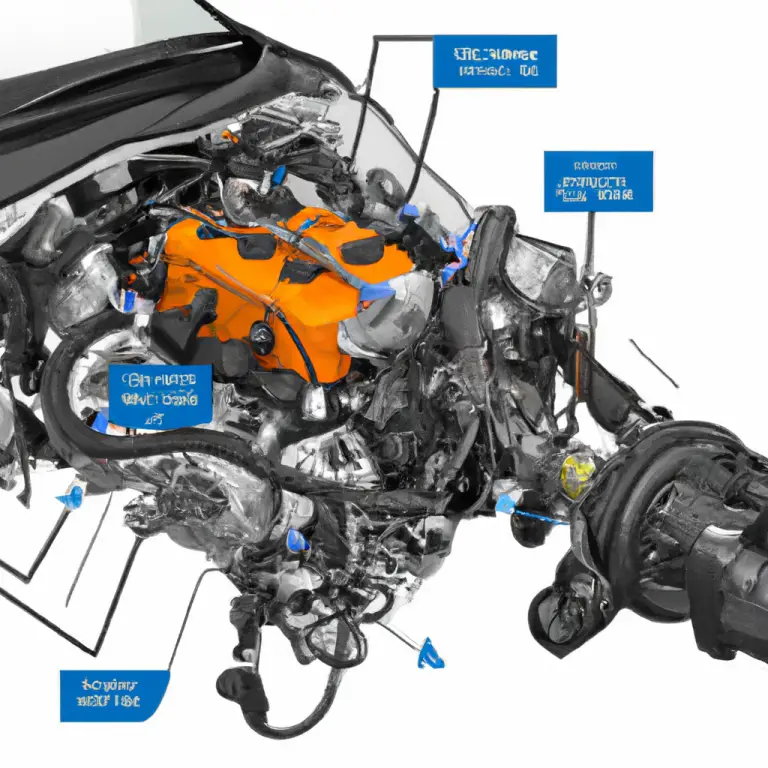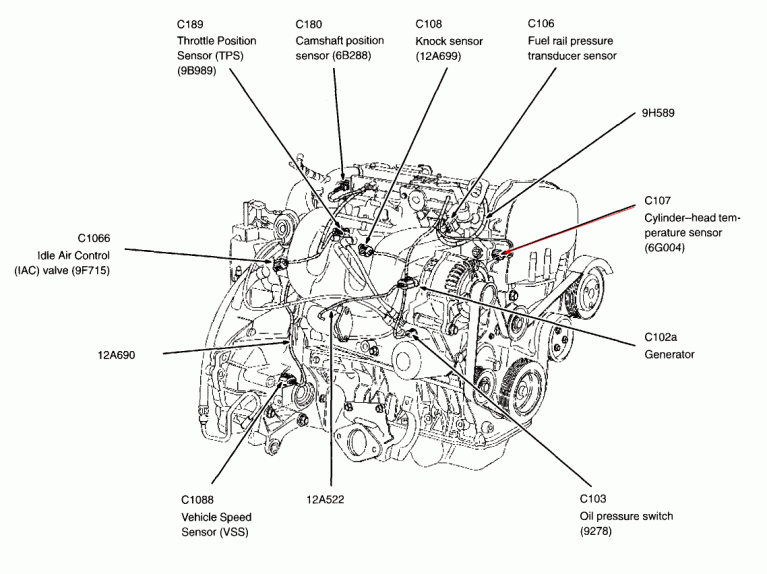Ford Focus Purge Valve Recall
Last Updated on by David Jon
The Ford Focus Purge Valve Recall is a critical issue with extensive implications for vehicle owners and the broader automotive industry. This article sheds light on the recall, elucidating its causes, impacts, and potential solutions. Minute attention is given to details and a meticulous approach is adopted to explain this issue comprehensively. This content serves not just as an informative piece, but also an authoritative guide offering value to both Ford Focus owners grappling with the recall, and to those with a keen interest in automotive recalls. Expect an insightful, thorough exploration optimized to address all your queries, presented in a structured and engaging manner.
The Ford Focus Purge Valve Explained
The purge valve, also known as the canister purge valve, plays a significant role in the functionality of a car. It forms a part of your vehicle’s evaporative emission control (EVAP) system, preventing harmful pollutants captured in the canister from being released into the environment. It performs this by channelling these vapors into the engine to be burned off during the combustion process.
Brief Overview of Purge Valve’s Role in a Car
The purge valve regulates the flow and release of fuel vapors from the charcoal canister to the engine during specific operational conditions. When the engine runs at optimum temperature and speed, the on-board computer signals the valve to open. This action allows the stored vapors to be drawn into the engine, where they are burnt and utilized as fuel. This process is not only an environmentally-friendly approach but helps to enhance fuel economy as well.
How the Purge Valve Functions in a Ford Focus
Interestingly, the purge valve’s function in a Ford Focus doesn’t deviate from standard vehicles. When the Ford Focus’s engine is up and running, and achieving optimum speeds, the engine control unit (ECU) activates the purge valve. This reaction triggers it, allowing the trapped fuel vapors to circulate from the charcoal canister and into the engine.
Trace Detailing the Make and Models Fitted with the Problematic Purge Valve
Certain Ford models were unfortunately equipped with a problematic purge valve, particularly the Ford Focus. The Focus models produced between 2012 and 2017 were most affected. Other models faced some minor issues, touching on the Ford C-MAX of 2013-2018 and Ford Mustang of 2015-2017. Essentially, any Ford vehicle manufactured within these periods featuring a 2.0L GDI or 2.0L GTDI engine were potentially affected.
Reasons for the Ford Focus Purge Valve Recall
The Ford Focus purge valve recall was indeed a significant issue, and understanding the reasons behind it can help clarify potential risks and how to avoid them.
Explanation on the Identified faults
Ford identified that the purge valves in the aforementioned models could become stuck in an open position. When this happens, an excessive vacuum develops in the fuel system. This fault could cause the fuel tank walls to deform, leading to a malfunction indicator light or a fuel gauge with fluctuating or inaccurate readings. In extreme cases, this could lead to engines stalling while driving, with an inability to restart, which poses considerable safety risks.
Connection of the Faults to Potential Risks or Damage
These faults carry potential risks in many ways. A deformed fuel tank may lead to a leak, increasing the chance of a fire if an ignition source is present. Furthermore, an unexpected engine stall or the failure to start the engine are key safety risks, especially when driving at higher speeds or in dense traffic.
Supporting Documentation or Reports Detailing the Faults
Ford revealed the purge valve issue through a safety recall report that was forwarded to the National Highway Traffic Safety Administration (NHTSA). The report detailed the malfunction and the risks connected to it. Upon evaluation of field data, Ford’s Field Review Committee approved field action, mandating a safety recall.
Implications of the Purge Valve Recall
Immediate and Long-term Damage to the Vehicle if Purge Valve Malfunction is not Addressed
If this purge valve malfunction isn’t addressed timely, it can lead to multiple damages. Immediately, your Ford Focus might reveal an illuminated malfunction indicator light or a fuel gauge with fluctuating or inaccurate readings. In the long-term, a stuck valve may induce the deformation of your fuel tank, leakage of fuel, an unexpected engine stall, or failure to start the engine. Consequently, addressing this issue promptly is a necessity.
Public Response to the Recall
The recall was met with mixed reactions from the public. While many appreciated Ford’s proactive approach in handling the issue, others expressed worries about the safety of their vehicles. Such a significant recall understandably triggers concerns about quality control, and Ford faced much criticism.
Likely Impact on Ford’s Brand Image and Customer Trust
The recall impacted Ford’s brand and customer trust to some extent. Voluntary recalls, though necessary as a safety measure, often serve as a double-edged sword. They protect consumers and demonstrate a company’s commitment to safety and honesty, but they also cast a shadow of doubt on manufacturing processes and quality assurance.
Details of the Ford Focus Purge Valve Recall
Quantity of Vehicles Affected
It is important to note that a substantial number of vehicles were affected by this purge valve issue. According to Ford, approximately 1.5 million vehicles across North America were impacted.
Specific Models Involved
The recall did not only involve the Ford Focus. Other models such as 2013-2018 Ford C-MAX and 2015-2017 Ford Mustang equipped with 2.0L GDI or 2.0L GTDI engines were also a part of this safety recall.
Regions and Countries Impacted by the Recall
The recall was extensive and global, impacting numerous vehicles across the United States, Canada, and Mexico. Many Ford owners in various regions were urged to respond to the recall and get their purge valves fixed or replaced.
Process Following the Recall Announcement
Steps Ford took Following the Recall
After announcing the recall, Ford took several steps to mitigate the issue. Dealers were given instructions to reprogram the powertrain control module with new software to detect a malfunctioning purge valve. They were also tasked to inspect and replace components as necessary, including the purge valve, carbon canister, fuel tank, and fuel delivery module.
Dialogue between Ford and Affected Customers
Ford initiated a dialogue with the affected customers, informing them about the recall via mail. It also set up a Customer Satisfaction Program to provide no-cost remedies to every owner affected by the situation.
Customer Compensation or Replacement Procedures for Faulty Purge Valves
Ford owners affected by the purge valve issue were directed to take their vehicles to a Ford dealership. Here, over an approximately half-day service, the purge valve would be checked and replaced, and the powertrain control module reprogrammed as needed, at no cost to the customer.
How to Identify a Faulty Purge Valve in Ford Focus
Primary and Secondary Symptoms Indicating a Malfunctioning Purge Valve
There are several telltale signs that may point to a malfunctioning purge valve. The primary symptom is an illuminated malfunction indicator light on your dashboard. Other secondary symptoms include the occurrence of rough idle, trouble starting the vehicle, and fluctuating fuel gauge readings.
How to Diagnose a Malfunctioning Purge Valve at Home
While it’s advised to have a professional diagnose your vehicle, there are steps you can take at home to detect a potentially faulty purge valve. If you notice any of the symptoms mentioned above, especially the illuminated malfunction indicator light, it’s crucial to act promptly. A basic diagnostic measure can be performed by tracking your vehicle’s fuel consumption. A faulty purge valve can lead to decreased fuel efficiency.
When to Seek Professional Help
If you notice any of the aforementioned symptoms or suspect that your purge valve might be faulty, we recommend taking your vehicle to a professional mechanic or authorized Ford dealership for a full diagnosis and necessary repairs. The complexities of the EVAP system require professional understanding to ensure accurate diagnosis and appropriate solutions.
Repercussions for Not Responding to the Recall
Potential Mechanical Issues
Not addressing the recall can lead to several mechanical issues. You face the risk of your Ford Focus having a significant reduction in fuel efficiency, perhaps developing a fuel leak or experiencing an unexpected engine stall. In the worst-case scenario, it could even lead to engine failure.
Possible Legal Liabilities
By ignoring the recall, you might incur legal liabilities. Depending on your local laws, you may become liable for accidents caused by known and unaddressed vehicle defects.
Possible Increase in Insurance Premiums
Ignoring a recall may also impact your vehicle’s insurance. When a recall is neglected, insurers can possibly deem the vehicle ‘unroadworthy,’ which could result in increased premiums or affect future claim handling.
Ford’s Prior History with Vehicle Recalls
Narrating Ford’s History with Recalls
Historically, Ford, like any large auto manufacturer, has had its share of recalls. These have ranged from minor to more serious issues, but each has been handled diligently. Ford has consistently shown a commitment to rectifying issues and improving customer safety.
If applicable, Comparisons between the Purge Valve Recall and Past Recalls
Comparatively, the purge valve recall was extensive, involving over a million vehicles. It may not rank as the largest, but its impact was definitely significant, both practically on owners and on Ford’s reputation. Notwithstanding, Ford’s handling of the recall situation adds another chapter to its overall commitment to address faults and maintain customer safety and satisfaction.
Steps Ford Takes to Correct the Purge Valve Issue
Ford’s Standard Procedure for Recalls
Whenever a recall is issued, Ford’s standard procedure involves notifying all known owners and advising them on the next steps. These typically involve booking a service with an authorized Ford dealership where the defect is inspected and fixed.
Specific Approach for the Purge Valve Recall
In response to the purge valve recall, Ford took a comprehensive approach to resolve the issue. Ford issued detailed instructions to its authorized dealers to reprogram the powertrain control module, as well as inspect and replace the purge valve, carbon canister, fuel tank, and fuel delivery module if necessary, all at no cost to the customer.
Expected Timeframe for Correction
For the purge valve issue, the expected timeframe for correction is approximately half a day at a Ford dealership. However, given the number of potentially affected vehicles, we advise contacting and scheduling an appointment promptly to ensure your vehicle is attended to in a timely manner.
What Was the Specific Issue with the Purge Valve in the 2014 Ford Focus?
The specific issue with the purge valve in the 2014 Ford Focus led to a significant concern, resulting in a ford focus recall purge valve. This recall was necessary as the malfunctioning purge valve could cause fuel leakage, posing a potential fire hazard. Ensuring vehicle safety, Ford promptly addressed this issue by repairing or replacing affected vehicles’ purge valves.
Conclusion: Key Points to Remember about the Ford Focus Purge Valve Recall
This recall serves a reminder of the importance of attending to vehicle recalls promptly. A faulty purge valve may not seem vital, but its dysfunction can cause significant wrecks to your vehicle. Therefore, an active response to recalls can prevent a cascade of future issues.
Ford has put measures in place to fix the problems at no cost to the customer. Let this be an assuring note that the company values your safety and satisfaction. Further, it’s crucial to remember that vehicle recalls do not necessarily reflect the overall quality of the brand. Rather, they reveal a manufacturer’s commitment to ensuring safer and more reliable products on the road.
Lastly, stay vigilant about your vehicle’s maintenance, and don’t overlook the check engine light or any other unusual occurrences. Regular maintenance checks and timely repairs help to prolong your vehicle’s lifespan and uphold its performance.







